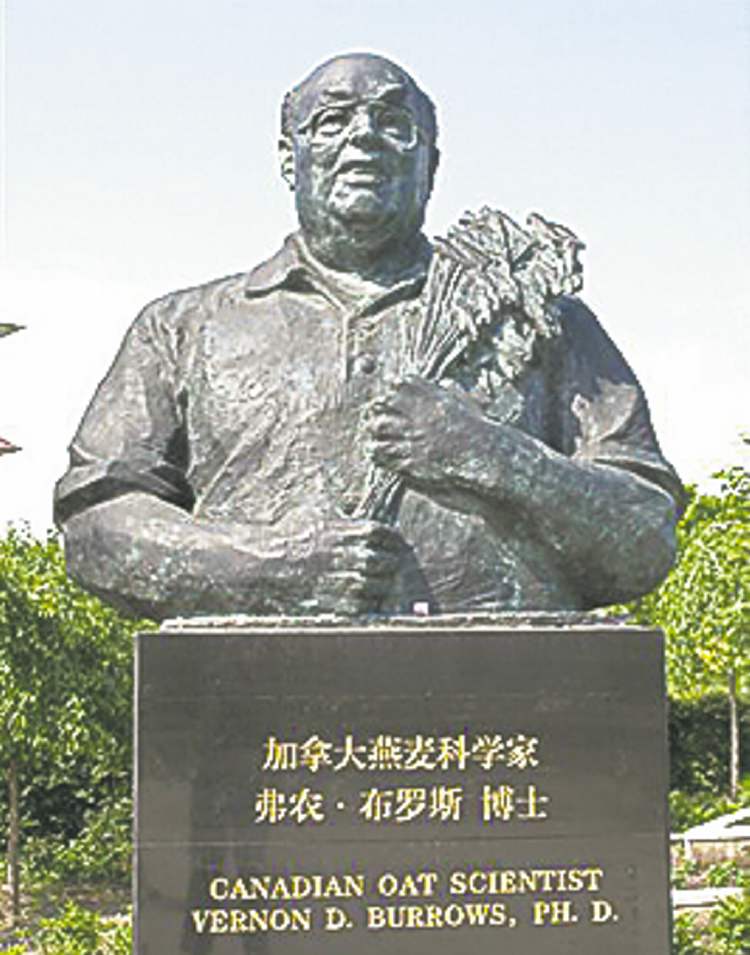Ex-Winnipegger has a feel for oats
Elderly scientist revered in China for work there
Advertisement
Read this article for free:
or
Already have an account? Log in here »
To continue reading, please subscribe:
Monthly Digital Subscription
$0 for the first 4 weeks*
- Enjoy unlimited reading on winnipegfreepress.com
- Read the E-Edition, our digital replica newspaper
- Access News Break, our award-winning app
- Play interactive puzzles
*No charge for 4 weeks then price increases to the regular rate of $19.00 plus GST every four weeks. Offer available to new and qualified returning subscribers only. Cancel any time.
Monthly Digital Subscription
$4.75/week*
- Enjoy unlimited reading on winnipegfreepress.com
- Read the E-Edition, our digital replica newspaper
- Access News Break, our award-winning app
- Play interactive puzzles
*Billed as $19 plus GST every four weeks. Cancel any time.
To continue reading, please subscribe:
Add Free Press access to your Brandon Sun subscription for only an additional
$1 for the first 4 weeks*
*Your next subscription payment will increase by $1.00 and you will be charged $16.99 plus GST for four weeks. After four weeks, your payment will increase to $23.99 plus GST every four weeks.
Read unlimited articles for free today:
or
Already have an account? Log in here »
Hey there, time traveller!
This article was published 04/08/2012 (4862 days ago), so information in it may no longer be current.
OTTAWA — Everywhere you look in Vernon Burrows’ office in central Ottawa there are oats.
Lots and lots of oats. Lining the window sill are more than a dozen jars of oat seeds he has created. Packets of seeds sit on every section of his desk. On every chair, bookshelf, nook and cranny are ripe stalks of raw oats, labelled with coloured tags and ready for him to process on his self-designed miniature thresher on his desk.
For more than 50 years, Burrows has been working to develop better varieties of oats.

His research to develop varieties of hull-less oats that are easier to harvest and better to use as animal feed has helped earn him the nickname “Dr. Oats” in Canada.
In the last decade, Burrows has become a beloved figure on the other side of the world for helping bring better oat plants to China, the world’s most populous nation.
In June, his work was recognized by the Chinese government and a bronze statue in his likeness was unveiled in Baicheng, a city in Jilin province, northwest of Beijing.
“It came as a big surprise to me, but it’s very nice,” Burrows said.
Some in China have compared him to Dr. Norman Bethune, the Canadian physician who became legendary in China when he died while treating Chinese soldiers in the 1930s.
“(Burrows) is a Canadian agricultural scientist revered by the Chinese people and praised as an international friend in the style of Canada’s Dr. Norman Bethune,” said Dr. Ren Changzhong, president of the Baicheng Academy of Agriculture Sciences, when Burrows visited in late June.
Ren studied under Burrows in Ottawa and is now the senior oat scientist in China. He was responsible for getting the statue of Burrows approved by the Chinese government.
Burrows shrugs off the comparison to Bethune, but is clearly pleased by it.
“That’s pretty nice, but it’s a bit of a stretch,” he said.
He was born in Winnipeg, growing up in West Kildonan. He inherited his interest in plant science from his grandfather, James Cartwright, who had a greenhouse and taught Burrows how to experiment with plants. He graduated from the University of Manitoba with a degree in agricultural science before moving to Ottawa, where he has worked for Agriculture Canada since the mid-1960s.
His plants have helped racehorses, pig farmers and people with celiac disease. Campbell’s Soup recently used one variety to make Nourish, a meal-in-a-can for food banks.
Burrows retired from Agriculture Canada in the mid-1990s, but went back to work three days later. One of the first things he did was satiate his curiosity about China.
“I had never met any Chinese scientists at international meetings, and I didn’t know what was going on there.”
What he did know was the original hull-less oat came from China, and he wanted learn more about what was being done there.

He wrote to a contact to offer his expertise and made his first trip to give some lectures at agricultural schools and at Beijing’s gene bank.
Burrows took with him 14 different types of oat seeds from Canada to share with the Chinese and was given 21 seeds in return. When he returned, he crossbred the best of both countries’ seeds and produced even better ones. The hybrids are now grown in both countries.
One variety he produced happens to grow well in highly saline soils, which was a big help to the Chinese. Much of their soil has such high salt content nothing else will grow on it, but the oat plants are thriving. The oat seeds can be used a rice substitute, and with a higher protein content are considered a better alternative by some.
In a nation desperate to grow enough food for its more than one billion people, getting more from the land is a huge accomplishment and one for which Burrows has been given credit.
He has made 13 trips to China. He’s been there so often, he even piqued the interest of the Canadian Security Intelligence Service (CSIS), Canada’s spy agency, which contacted him after one trip.
Burrows, 82, has no intention of stopping his work. His eyes light up when thinking of future experiments that might be done to test his oats in improving the health of livestock and people.
He is thrilled to see the benefit of oat plants being spread around the world.
mia.rabson@freepress.mb.ca

